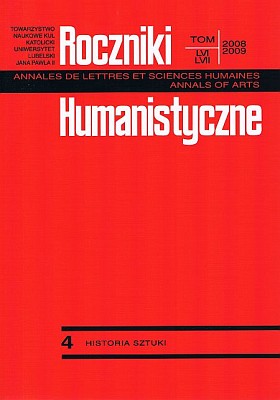Colouring in Polish Painting in the Second Half of the Twentieth Century
Abstract
This study discusses the whole of artistic endeavour in Polish painting within the colouristic trend in the second half of the twentieth century. It follows from our analysis that in the period under consideration there were in fact two schools of painting in Poland: “The Sopot School” and “the Poznań School.” It is true that the Warsaw and Cracow milieus were full of eminent artists, such as Eugeniusz Eibisch, Jerzy Fedkowicz, Czesław Rzepiński, Jan Cybis, Artur Nacht-Samborski, Zbigniew Pronaszko, Hanna Rudzka-Cybisowa, and many others, but they did not constitute any coherent and classically regional school of painting. They themselves were almost artists-institutions whose standard of art they pursued was obvious. Each of them created his or her own individual and unique, but recognisable, painting canon. Other prominent artists, like Wacław Taranczewski or Stanisław Teisseyre – the former personally linked with the Cracow Academy and PWSSP in Poznań and the latter with the Poznań Academy and PWSSP in Gdańsk – were like Demiurges; each of them would graft artistic conceptions from one place onto another. The same role was played by Jan Cybis or else Artur Nacht-Samborski. They both personally combined the Warsaw and Gdańsk (once Sopot) Academies. Similarly, Juliusz Studnicki would combine Gdańsk with Warsaw Academy in which he taught from 1959 onwards. Now the duet Emil Krch and Eugeniusz Geppert created Wrocław Art School in which and, through Krch, personally combined this School and Cracow Art School. These personal reshufflings had undoubtedly an enlivening impact on the general development and specific character of Polish colouristic painting. As a result, it was distinguished by decisiveness against the broad backdrop of European post-Impressionism.
Copyright (c) 2009 Roczniki Humanistyczne

This work is licensed under a Creative Commons Attribution-NonCommercial-NoDerivatives 4.0 International License.





